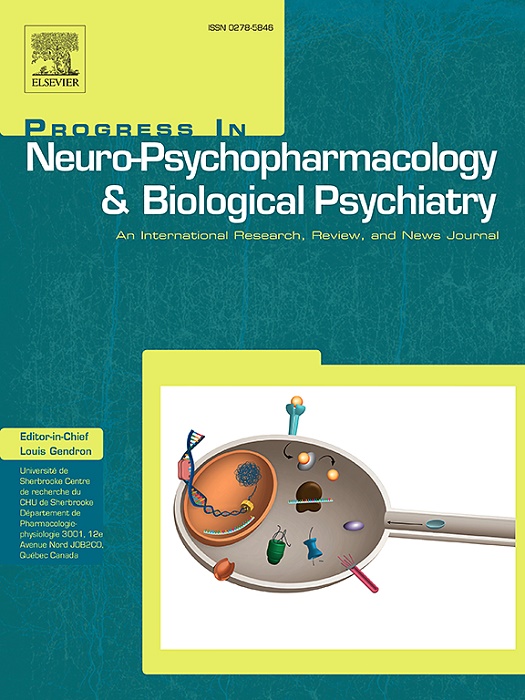先前暴露于严重压力源对恐惧学习的影响:压力源类型和大鼠品系的关键贡献。
IF 3.9
2区 医学
Q1 CLINICAL NEUROLOGY
Progress in Neuro-Psychopharmacology & Biological Psychiatry
Pub Date : 2025-08-30
DOI:10.1016/j.pnpbp.2025.111484
引用次数: 0
摘要
长期行为改变的出现被认为是表征急性应激源作为假定的PTSD动物模型的关键。然而,所使用的不同压力源的创伤性本质客观上难以证明,文献也受到不一致结果的困扰。在目前的研究中,我们想要证明与压力源的严重程度无关的定性方面的相关性(通过经典生物标记进行评估),以及使用不同的小鼠或大鼠品系如何导致不一致性。然后,我们将Sprague-Dawley (SD)和Long-Evans (LE)大鼠暴露于两种强度大致相似的严重应激源,即板上固定(IMO)和不可避免的足部冲击(IS),研究它们对情境恐惧条件反射、泛化、消退和消退回忆的影响。结果证实,两种应激源在应激生物学标记上的严重程度相似(IMO略严重),但其对恐惧条件反射的影响强烈依赖于应激源和应激品系,其中IS对LE大鼠的影响较大,IMO对后者品系的影响较小,而两种应激源对SD大鼠的影响几乎为零。因此,我们确认了压力源和压力的定性方面的相关性,以便描述适当的创伤后应激障碍模型。破译这两个因素背后的作用过程是至关重要的,需要在不同的神经生物学水平上比较压力源和压力。本文章由计算机程序翻译,如有差异,请以英文原文为准。
The impact of prior exposure to severe stressors on fear learning: The critical contribution of the type of stressor and the rat strain
The appearance of long-lasting behavioral alterations is considered critical for the characterization of acute stressors as putative animal models of PTSD. However, the traumatic nature of the different stressors used is objectively difficult to demonstrate and literature is plagued by inconsistent results. In the present study we wanted to demonstrate the relevance of qualitative aspects of stressors not linked to their severity (as evaluated by classical biological markers) and how the use of different mouse or rat strains can contribute to the inconsistencies. We then exposed Sprague-Dawley (SD) and Long-Evans (LE) rats to two different severe stressors of roughly similar intensity, immobilization on boards (IMO) and inescapable foot-shocks (IS), and studied their impact on contextual fear conditioning, generalization, extinction and extinction recall. The results confirmed that the two stressors are of similar severity (IMO a little bit more severe) in terms of biological markers of stress, but their impact of fear conditioning was strongly dependent on the stressor and the strain, with a strong impact of IS in LE rats, a modest impact of IMO in the latter strain and almost null impact of the two stressors in SD rats. We thus confirm the relevance of both qualitative aspects of stressors and the strain used in order to characterize appropriate models of PTSD. Deciphering the processes underlying the contribution of the two factors is fundamental and requires comparison of stressors and strains at different neurobiological levels.
求助全文
通过发布文献求助,成功后即可免费获取论文全文。
去求助
来源期刊
CiteScore
12.00
自引率
1.80%
发文量
153
审稿时长
56 days
期刊介绍:
Progress in Neuro-Psychopharmacology & Biological Psychiatry is an international and multidisciplinary journal which aims to ensure the rapid publication of authoritative reviews and research papers dealing with experimental and clinical aspects of neuro-psychopharmacology and biological psychiatry. Issues of the journal are regularly devoted wholly in or in part to a topical subject.
Progress in Neuro-Psychopharmacology & Biological Psychiatry does not publish work on the actions of biological extracts unless the pharmacological active molecular substrate and/or specific receptor binding properties of the extract compounds are elucidated.

 求助内容:
求助内容: 应助结果提醒方式:
应助结果提醒方式:


